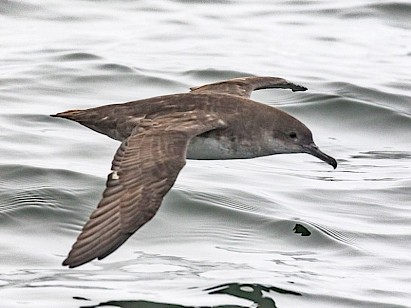Endangered bird holds key to surviving climate change
 An endangered seabird is shifting its migratory patterns to more hospitable climates, and researchers recently learned that the bird’s actions offer a unique perspective into surviving climate change.
An endangered seabird is shifting its migratory patterns to more hospitable climates, and researchers recently learned that the bird’s actions offer a unique perspective into surviving climate change.
On Monday, researchers from Oxford University’s Biology Department and the University of Liverpool published the results of a 14-year study in the Proceedings of the National Academy of Sciences journal. The study examines the actions of the Balearic shearwater, Europe’s most endangered seabird, and how behavioral flexibility influenced the shift in its migratory patterns rather than evolutionary selection.
Across the globe, climate change is rapidly leading to increased temperatures and more extreme natural disasters, both of which affect the survival of countless species. In the case of the Balearic shearwater, Europe’s most endangered seabird, researchers learned that the birds were migrating farther north in the summer when they fly to the Atlantic coasts of Spain and France. The birds have been found increasingly in the United Kingdom.
Researchers learned that the birds shifted their migration because of behavioral adaptation, which indicates that individual animals could have greater behavioral flexibility in their response to the impacts of climate change than previously thought.
Fisheries pose one of the biggest threats to the Balearic shearwater, as the birds get caught on baited longline hooks and gill nets, according to the study’s press release. In addition, the bird’s restricted habitat and the changing climate are at odds, but researchers found the bird’s response “encouraging.”
“We found that the best predictor of this change in migratory behaviour was the average sea surface temperature in the summering-grounds, suggesting that the birds may well be following changes in underlying marine resources,” study author Joe Wynn said in the press release. “The fact that individuals can be this flexible in the face of rapid climate change is encouraging.”
However, animal responses to climate change are difficult to generalize across species.
“It’s also important to remember that some responses to climate change might not be beneficial, and even if they are, they don’t guarantee a species’ survival. The anthropogenic change [humans’ influence on nature] could be too extreme,” Wynn, who is at Oxford, said.
Although the birds sought out an improved summer climate, this made for a longer trip back to the Mediterranean in the winter, and the long-term impacts of their migratory shift remain unclear. Individual birds tried to handle the extra distance by flying faster, but the study found they still arrived back in the Mediterranean later than usual.
The study provided a promising look into the birds’ habits in adjusting to climate change, but there’s still much the researchers don’t know.
“We don’t know, for instance, how the delayed return to the breeding grounds is affecting their recovery from migration and courtship behaviors, which might have knock-on effects on their breeding success or survival,” study co-author Patrick Lewin, who’s also at Oxford, stated. “In a species that’s already critically endangered, we really need answers to those questions.”
In the future, the study’s authors hope to further examine the migration patterns of young Balearic shearwaters, as the birds spend time as fledglings learning where to migrate for the rest of their lives. Some of the birds have lived to 50 years old.
Wynn said, that the young birds’ learning could be affected by rising temperatures, particularly if that has an impact on the distribution of food resources. That learning could then influence their migratory habits.
“This is one of the things we want to study in the future, using new GPS trackers which can send us the data remotely via the mobile data network but are small enough to be carried by a fledgling shearwater during its first migration,” Wynn said.
You can return to the main Market News page, or press the Back button on your browser.

